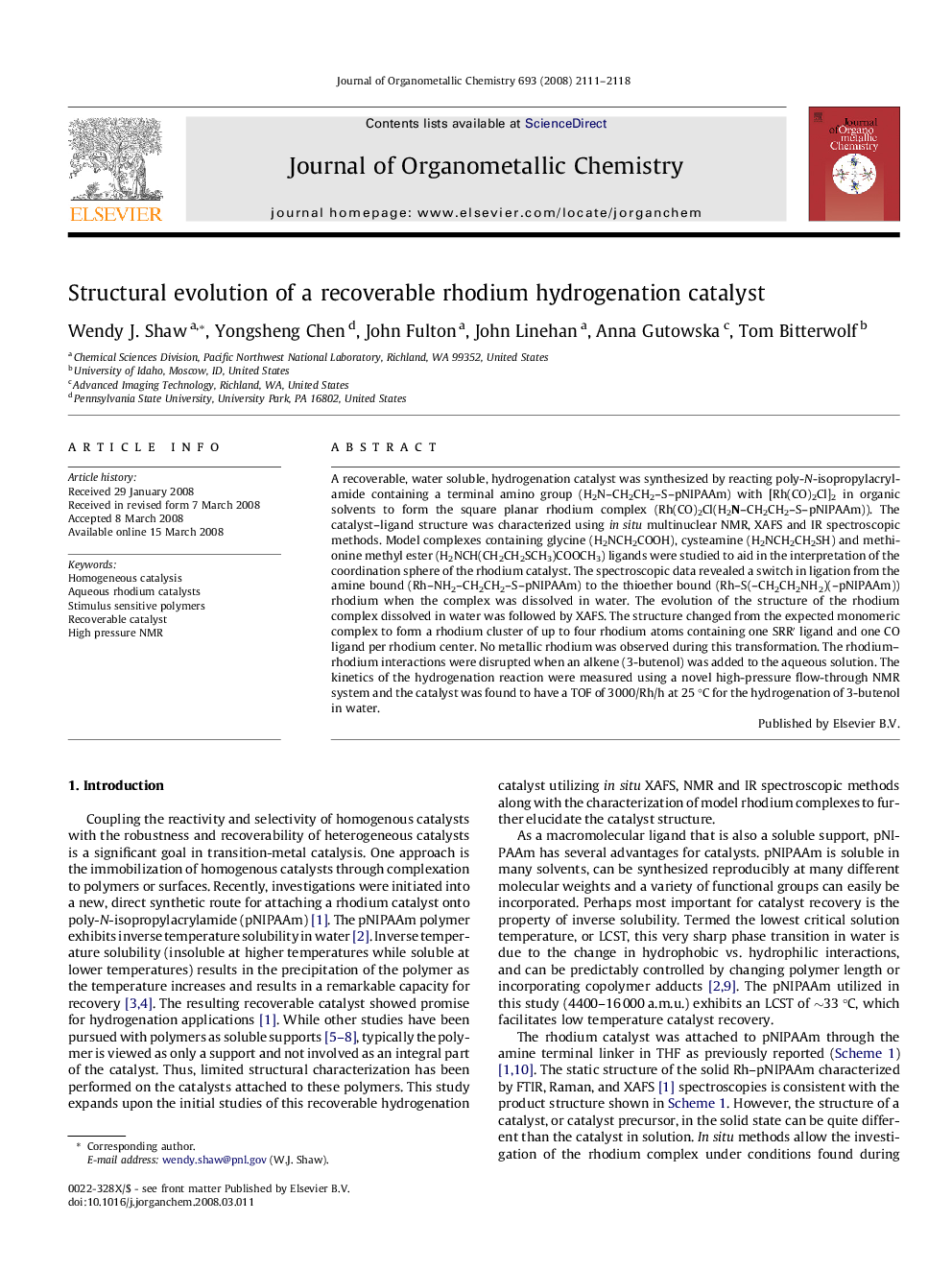| Article ID | Journal | Published Year | Pages | File Type |
|---|---|---|---|---|
| 1324810 | Journal of Organometallic Chemistry | 2008 | 8 Pages |
A recoverable, water soluble, hydrogenation catalyst was synthesized by reacting poly-N-isopropylacrylamide containing a terminal amino group (H2N–CH2CH2–S–pNIPAAm) with [Rh(CO)2Cl]2 in organic solvents to form the square planar rhodium complex (Rh(CO)2Cl(H2N–CH2CH2–S–pNIPAAm)). The catalyst–ligand structure was characterized using in situ multinuclear NMR, XAFS and IR spectroscopic methods. Model complexes containing glycine (H2NCH2COOH), cysteamine (H2NCH2CH2SH) and methionine methyl ester (H2NCH(CH2CH2SCH3)COOCH3) ligands were studied to aid in the interpretation of the coordination sphere of the rhodium catalyst. The spectroscopic data revealed a switch in ligation from the amine bound (Rh–NH2–CH2CH2–S–pNIPAAm) to the thioether bound (Rh–S(–CH2CH2NH2)(–pNIPAAm)) rhodium when the complex was dissolved in water. The evolution of the structure of the rhodium complex dissolved in water was followed by XAFS. The structure changed from the expected monomeric complex to form a rhodium cluster of up to four rhodium atoms containing one SRR′ ligand and one CO ligand per rhodium center. No metallic rhodium was observed during this transformation. The rhodium–rhodium interactions were disrupted when an alkene (3-butenol) was added to the aqueous solution. The kinetics of the hydrogenation reaction were measured using a novel high-pressure flow-through NMR system and the catalyst was found to have a TOF of 3000/Rh/h at 25 °C for the hydrogenation of 3-butenol in water.
Graphical abstractHigh pressure XAFS and NMR were used to investigate the structure and kinetics of a recoverable hydrogenation catalyst, (Rh(CO)2Cl(H2N–CH2CH2–S–pNIPAAm)). Upon dissolution in water, a tetrameric rhodium cluster was formed. Monomeric rhodium species are recovered during hydrogenation reactions in water.Figure optionsDownload full-size imageDownload as PowerPoint slide
